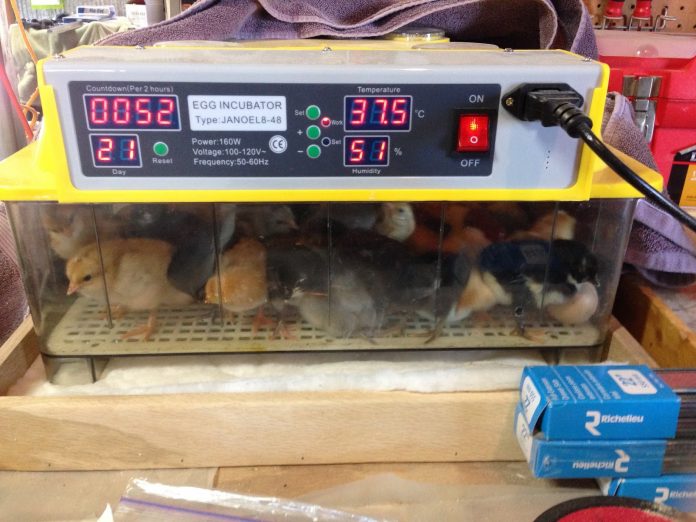Home hatching projects can be a great project to enjoy with your family. There are many things you will want to consider before starting up your incubator. If you’ve never hatched before, there are some things you may not think of first. Hatching baby chicks shouldn’t just be an exercise in biology. It can also be an exercise in problem solving, thinking ahead, taking responsibility, accepting disappointment and making hard choices. After all, a hatching project doesn’t begin at incubation, it begins long before when you start taking responsible steps to care for the living creatures you are hatching—they are totally dependent on you to provide them care. Well, take a step back and consider these four issues first.
Rule 1: Having facts about home incubation
Incubating chicks in a home incubator is often more challenging than humans expect. Aside from transportation issues, chicks that are not incubated properly even when temperatures or humidity were very slightly off can die, or be hatched ill or deformed. Especially where you’re using the inexpensive home incubators requiring your time and attention to keep the temperature and humidity at the right levels, or requiring you to manually turn the eggs, even a long day away from home where the humidity has dropped or the eggs don’t get turned on schedule can cause problems down the line. So you should consider if you have the time or the equipment to make sure incubation goes smoothly.
Rule 2: Make sure everyone knows the rules of incubation
Be sure to let your kids know about how delicate an operation incubation can be. Some kids are understandably so excited they want to lift the incubator lid and handle the eggs. Unless you tell them, they may not understand that letting out heat and humidity so frequently can cause the developing chicks to die, and they may not understand how sensitive some incubator thermostats can be. A very small adjustment made by a well-meaning child may send temperatures skyrocketing to 120 or more, way too hot. It can be very disappointing to get a bad hatch rate. So be sure to prepare them to understand both the best case scenario and the worst case scenario.
Rule 3: Don’t count your chicks before they hatch
It can be difficult to predict how many chicks will hatch out of your eggs. If something goes wrong—if the temperature is off even by a degree, if the eggs aren’t turned properly, if there is a power outage, if the lid of the incubator is lifted too often, if the eggs are handled by dirty hands, or even if the eggs just got shaken too much during transportation. Without a doubt, this will make your hatch rate drop.
Rule 4: Find the best fertile eggs for your needs
You will want the best fertile eggs for your needs. This doesn’t mean you need to buy the most expensive, rarest eggs around. It is encouraged that those planning hatching projects to try and find eggs in a nearby location, if possible, so the hatch rate will be better. Transported eggs have a reduced hatch rate due to the stresses of transportation like pressure changes in vehicles, bumpy roads and turbulence
Before venturing into incubation hatching, be sure that these rules apply for it to be a success.








